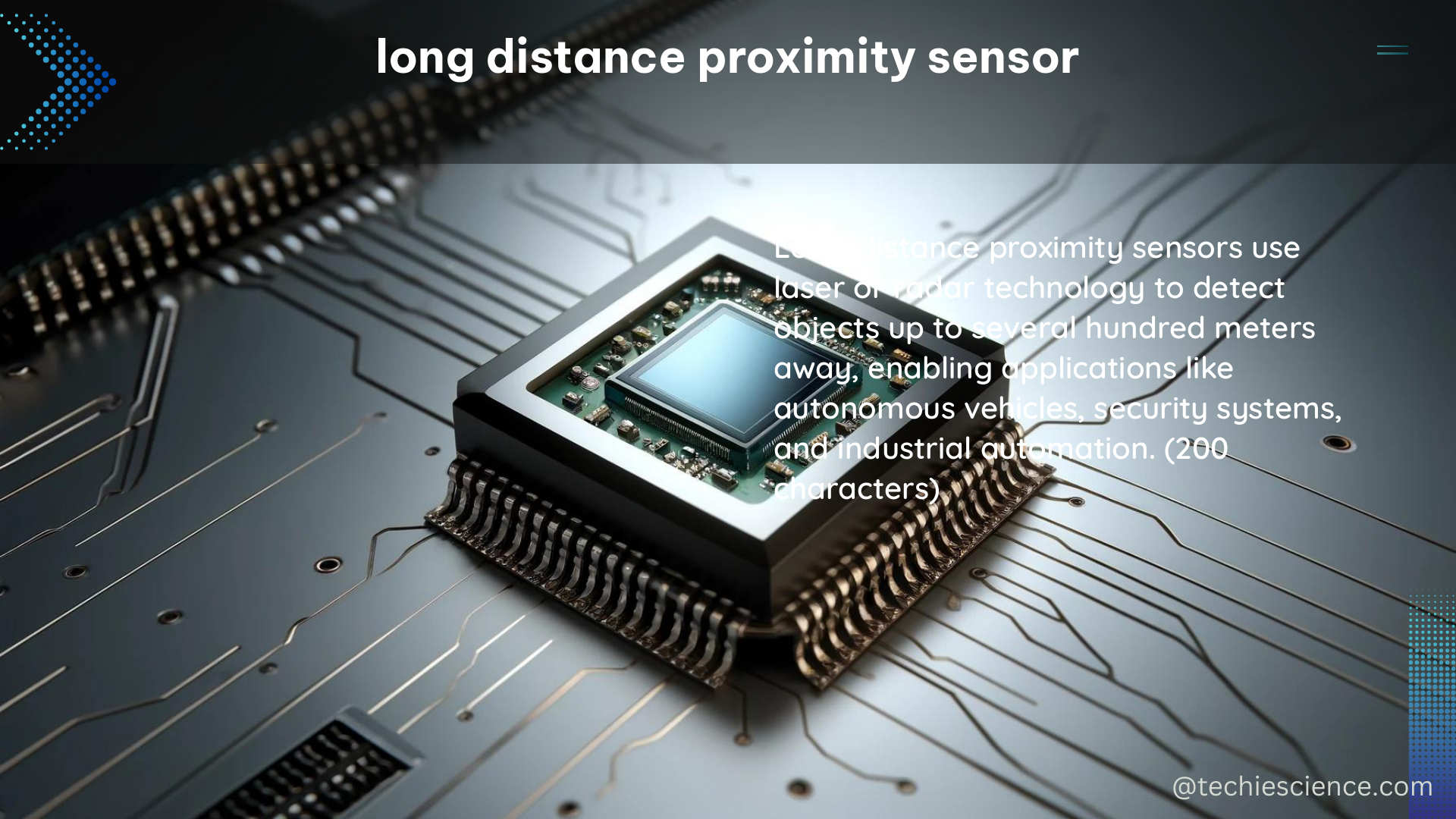Long distance proximity sensors are a cutting-edge technology that can detect the presence or absence of objects at remarkable distances, often without the need for physical contact. These sensors have a wide range of applications, from industrial automation and security systems to robotics and beyond. In this comprehensive guide, we’ll dive deep into the technical specifications, performance metrics, and practical considerations of these remarkable devices.
Understanding the Fundamentals of Long Distance Proximity Sensors
Long distance proximity sensors are designed to detect the presence or absence of objects within a specific range, typically measured in meters or feet. These sensors utilize a variety of technologies, including optical, ultrasonic, and electromagnetic, to achieve their long-range capabilities.
One of the key specifications of a long distance proximity sensor is its range, which refers to the maximum distance at which the sensor can reliably detect an object. This range can vary widely depending on the sensor’s design and configuration, with some sensors capable of detecting objects up to 100 meters away or more.
Another important specification is the sensor’s field of view, which is the angular range within which it can detect objects. This is typically measured in degrees and can also vary significantly depending on the sensor’s design.
Evaluating the Performance of Long Distance Proximity Sensors

When it comes to evaluating the performance of long distance proximity sensors, there are several key metrics to consider:
Sensitivity
Sensitivity refers to the minimum amount of change in the measured quantity that the sensor can detect. For long distance proximity sensors, this is typically measured in millimeters or centimeters, with more sensitive sensors able to detect smaller changes in object distance.
Accuracy
Accuracy is the degree to which the sensor can reliably measure the quantity of interest, in this case, the distance to the detected object. Accuracy is typically expressed as a percentage or a range, such as ±5 millimeters.
Response Time
Response time is the amount of time it takes for the sensor to produce a stable output signal in response to a change in the measured quantity. For long distance proximity sensors, this is often measured in milliseconds.
Power Consumption
Power consumption is an important consideration, especially for battery-powered or portable applications. Long distance proximity sensors can vary widely in their power requirements, with some consuming as little as 50 milliwatts and others requiring significantly more.
Environmental Factors
The operating temperature range, humidity tolerance, and resistance to environmental factors like dust, vibration, and electromagnetic interference are all important considerations when selecting a long distance proximity sensor.
Measuring the Performance of Long Distance Proximity Sensors
There are several common methods used to measure the performance of long distance proximity sensors:
-
Test Object Measurement: This involves using a known test object, such as a metal plate or sphere, and measuring the sensor’s output as the object is moved closer to or further away from the sensor. This can be done using a variety of sensing techniques, including optical, ultrasonic, and infrared.
-
Calibration Standard Comparison: In this approach, the sensor’s output is compared to a known calibration standard, such as a reference sensor or a set of known reference values. This helps to ensure the accuracy and reliability of the sensor’s measurements.
-
Environmental Testing: Long distance proximity sensors are often subjected to a range of environmental tests, such as temperature, humidity, and vibration testing, to evaluate their performance and durability under real-world conditions.
Practical Applications of Long Distance Proximity Sensors
Long distance proximity sensors have a wide range of applications, including:
-
Industrial Automation: These sensors are used in manufacturing and processing environments to detect the presence or absence of objects, triggering actions or alerts as needed.
-
Security Systems: Long distance proximity sensors are used in security applications to detect the presence of intruders or unauthorized access, triggering alarms or other security measures.
-
Robotics and Autonomous Systems: Proximity sensors are essential for enabling robots and autonomous vehicles to navigate their environments and avoid collisions.
-
Transportation and Infrastructure Monitoring: Long distance proximity sensors are used to monitor the movement and position of vehicles, trains, and other transportation assets, as well as to detect changes in infrastructure like bridges and roads.
-
Agriculture and Environmental Monitoring: These sensors can be used to detect the presence of animals, crops, or other environmental factors at a distance, enabling more efficient and effective monitoring and management.
Conclusion
Long distance proximity sensors are a powerful and versatile technology that can revolutionize a wide range of applications. By understanding the key technical specifications, performance metrics, and practical considerations of these sensors, you can unlock their full potential and harness the power of remote object detection. Whether you’re working in industrial automation, security, robotics, or any other field, this comprehensive guide will provide you with the knowledge and insights you need to make informed decisions and achieve your goals.
References:
- Sensing and Sensor Fundamentals – SpringerLink
- Sensor Technology Handbook – OLLINTEC
- EFFECTS OF EMFS FROM UNDERSEA POWER CABLES ON … – BOEM
- FY24 NDAA Conference Report – Senate Armed Services
- Sensors for daily life: A review – ScienceDirect.com

The lambdageeks.com Core SME Team is a group of experienced subject matter experts from diverse scientific and technical fields including Physics, Chemistry, Technology,Electronics & Electrical Engineering, Automotive, Mechanical Engineering. Our team collaborates to create high-quality, well-researched articles on a wide range of science and technology topics for the lambdageeks.com website.
All Our Senior SME are having more than 7 Years of experience in the respective fields . They are either Working Industry Professionals or assocaited With different Universities. Refer Our Authors Page to get to know About our Core SMEs.